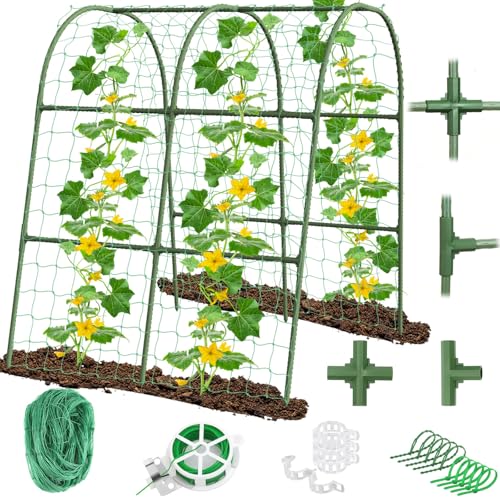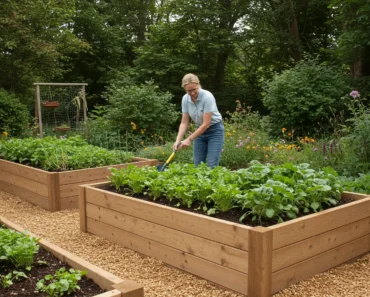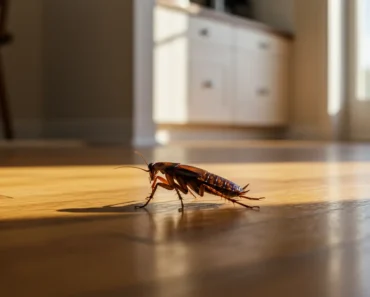Sweet Peas: 7 Secrets for the Most Fragrant Blooms. This guide reveals the keys to cultivating intensely scented sweet peas, sharing expert tips on everything from seed selection to ongoing care, ensuring your garden thrives with captivating fragrance.
Why Sweet Peas Captivate Gardeners
Sweet peas are not just flowers; they are an experience. Their delicate, ruffled blooms come in a spectrum of colors, but their true magic lies in their extraordinary fragrance. This captivating scent fills the air, evoking memories of cottage gardens and long summer days. Gardeners across the United States cherish sweet peas for their beauty and their ability to transform any space into a fragrant sanctuary.
These charming annual climbers provide abundant cut flowers. They bring their delightful aroma indoors. Growing sweet peas is a rewarding endeavor, offering continuous blooms from late spring through summer with proper care. They attract pollinators like bees, contributing to a healthy garden ecosystem. Their vigorous growth and climbing nature also make them excellent for covering trellises, fences, or obelisks, adding vertical interest to your landscape.
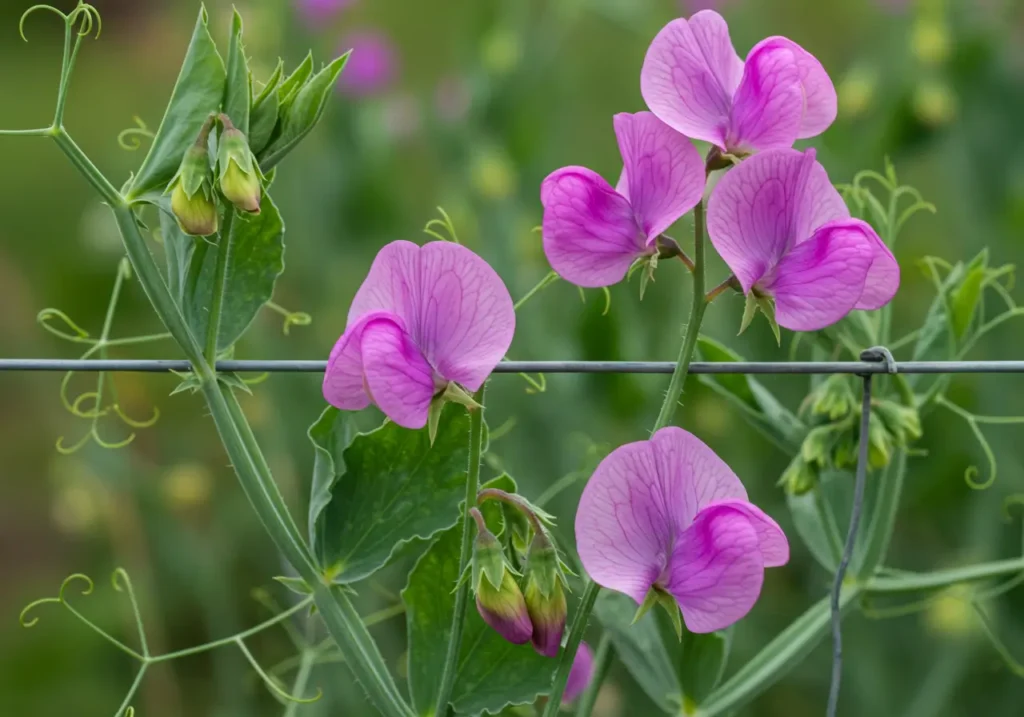
Understanding the specific needs of sweet peas unlocks their full potential. They perform best when given the right conditions from the very start. Following proven methods ensures not only beautiful flowers but also that iconic, rich fragrance that defines these beloved plants.
Key Factors for Sweet Pea Success
Sweet peas thrive under specific conditions. Meeting their fundamental requirements sets the stage for a season of abundant, fragrant blooms. Their success hinges on sunlight, proper soil, and robust support.
Sunlight Requirements: The Fuel for Fragrance

Sweet peas are sun worshippers. They demand full sun to produce their most fragrant and prolific blooms. This means they need at least six to eight hours of direct sunlight every day. In regions with extremely hot summers, some afternoon shade can prevent scorching. However, too much shade results in leggy plants with fewer flowers and a weaker scent.
Choose a location in your garden that receives ample morning sun. This allows plants to dry quickly after dew or rain, reducing disease risk. Observe your garden throughout the day to find the spot that provides the most consistent light. This crucial element fuels both bloom production and that coveted fragrance.
Soil Preparation: The Foundation of Growth
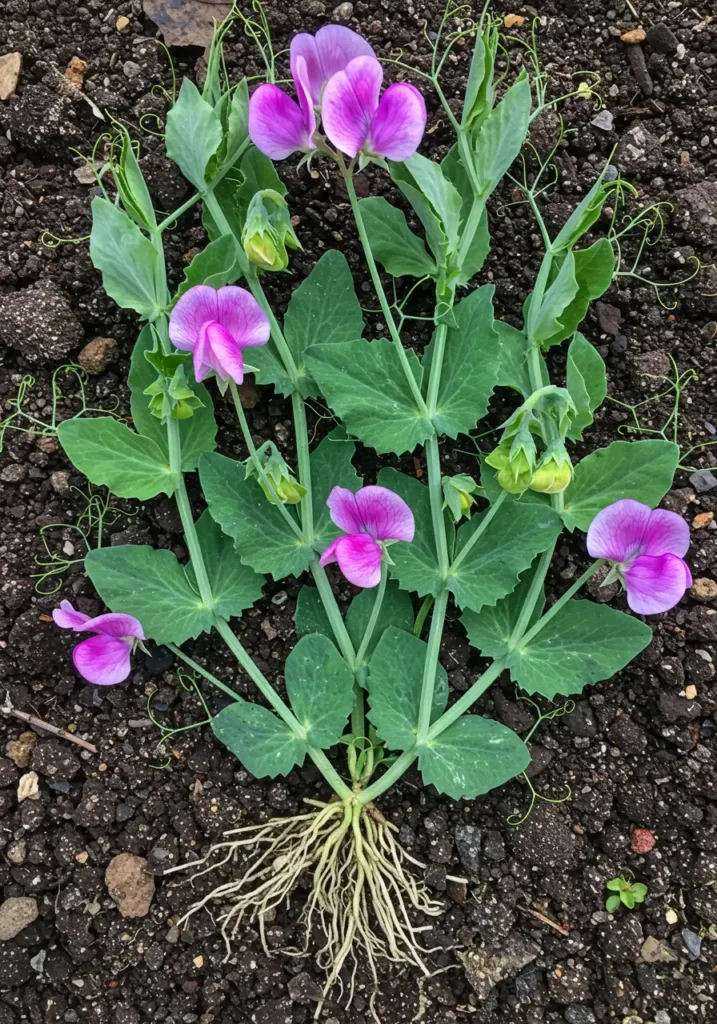
Sweet peas prefer rich, well-draining soil. They are heavy feeders. They need nutrient-rich conditions to support their vigorous growth and continuous flowering. Prepare your planting area thoroughly by amending the soil with plenty of organic matter. This includes compost, well-rotted manure, or leaf mold. These additions improve soil structure, enhance drainage, and provide essential nutrients.
Aim for a neutral to slightly alkaline soil pH (6.5-7.5). A soil test helps determine your current pH. If your soil is too acidic, add lime. Good drainage is vital; sweet peas dislike “wet feet,” which can lead to root rot. Proper soil preparation creates the ideal environment for strong root development, which underpins healthy plants.
Support Structures: A Helping Hand for Climbers

As vining plants, sweet peas require a sturdy support structure. They grow rapidly and use tendrils to climb. Without adequate support, plants sprawl on the ground, leading to poor air circulation and increased disease risk. Provide trellises, netting, bamboo canes, or obelisks for them to ascend.
Install support structures before planting. This avoids disturbing delicate young seedlings. Ensure the support is tall enough to accommodate their mature height, typically 5-8 feet, depending on the variety. Strong support encourages vertical growth, maximizing air flow and flower production.
7 Secrets for the Most Fragrant Sweet Pea Blooms
Achieving truly spectacular and intensely fragrant sweet pea blooms involves a few key practices. These secrets guide you toward a garden overflowing with their signature scent and beauty.
Secret 1: Choose the Right Varieties: Fragrance First
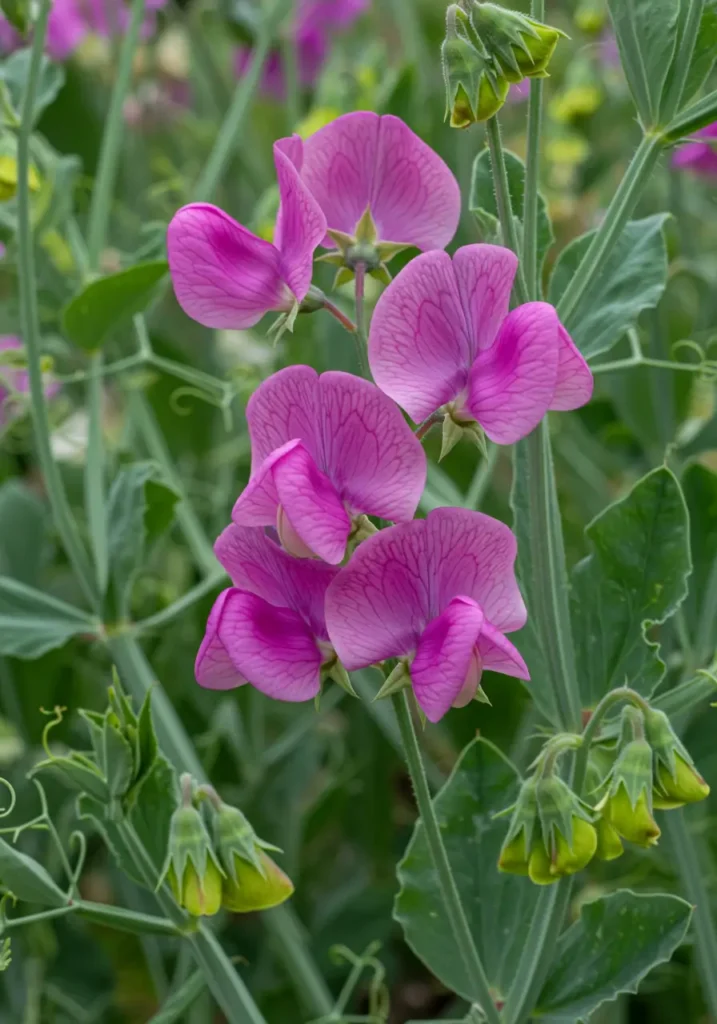
Not all sweet peas possess the same intense fragrance. Modern varieties, bred for large blooms and long stems, sometimes sacrifice scent. For the most fragrant results, seek out older, heirloom varieties known as Grandiflora types. These excel in perfume. While their flowers might be smaller than some modern hybrids, their intoxicating scent makes them worthwhile. Some popular fragrant choices include ‘Cupani’s Original’, ‘Matucana’, and ‘Old Spice’. Always check seed packet descriptions for notes on fragrance. This ensures your efforts yield the desired aromatic reward.
Secret 2: Early Sowing is Key: Timing is Everything
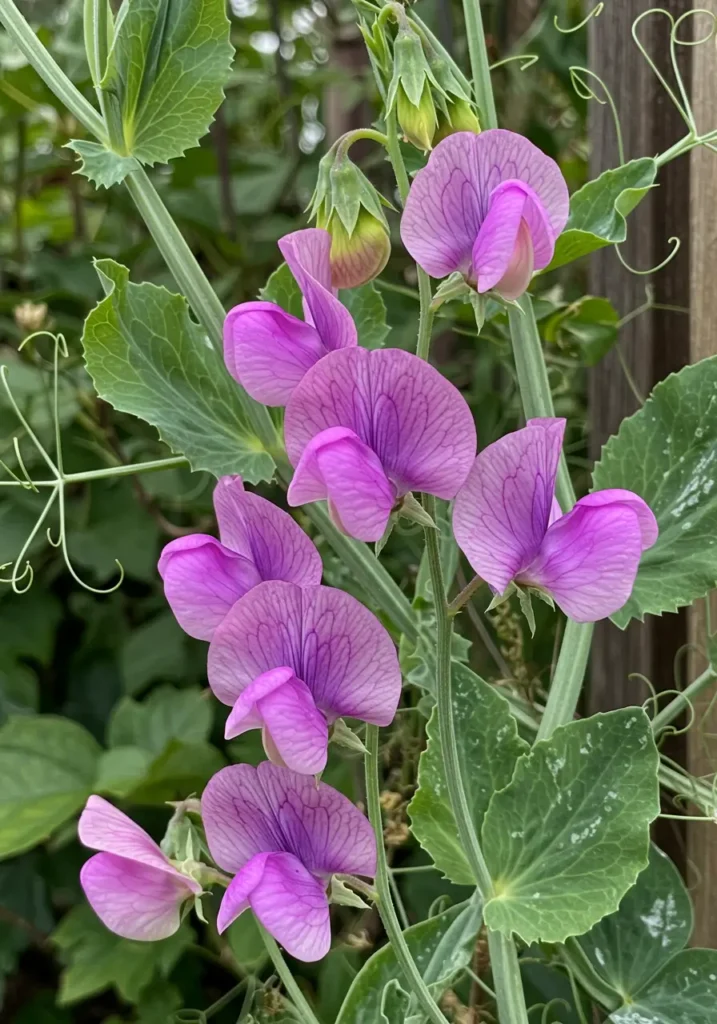
Sweet peas prefer cool roots and warm heads. This means they thrive when planted early, even in late autumn in mild climates or very early spring in colder regions. Autumn sowing allows seedlings to establish strong root systems before winter. This leads to earlier, more robust blooms in spring. For spring sowing, plant as soon as the soil is workable, typically 6-8 weeks before your last frost date. Starting seeds indoors in root trainers or toilet paper rolls helps protect delicate roots during transplanting. Early establishment proves vital for vigor.
Secret 3: Proper Soil Preparation: Nurturing the Roots

Sweet peas are heavy feeders and require nutrient-rich, well-draining soil. Before planting, amend your chosen site deeply with plenty of organic matter. Dig in generous amounts of compost, well-rotted manure, or leaf mold to a depth of at least 12-18 inches. This creates a loose, fertile bed. It allows roots to penetrate deeply. Good drainage prevents waterlogging, which sweet peas detest. A healthy root system supports vigorous top growth and prolific flowering, directly impacting fragrance intensity.
Secret 4: Provide Sturdy Support: Guiding Their Ascent

As climbing plants, sweet peas need a robust structure to ascend. Install trellises, netting, bamboo canes, or obelisks before planting your seeds or seedlings. This avoids disturbing their delicate roots later. Ensure the support stands tall enough for their mature height, often 6-8 feet. Sweet peas use small tendrils to grab onto supports. Ensure your chosen structure offers plenty of thin surfaces for them to cling to. Strong support encourages vertical growth, maximizing air circulation and sunlight exposure for every bloom.
Secret 5: Consistent Watering and Feeding: Fueling the Blooms
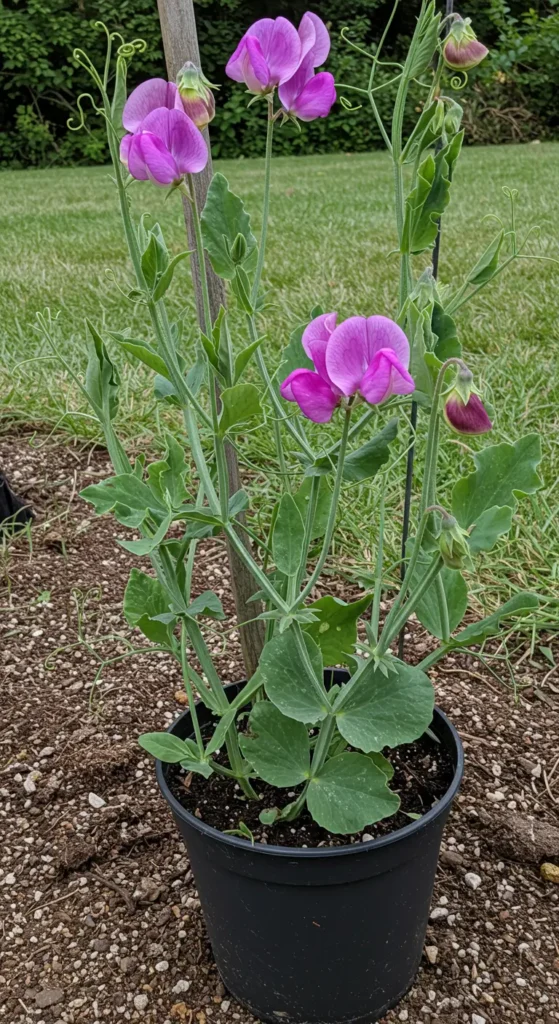
Sweet peas require consistent moisture, especially during dry periods and as they begin to flower. Water deeply and regularly, ensuring the soil remains evenly moist but not soggy. Avoid overhead watering, which can encourage fungal diseases. Once plants establish themselves, begin a regular feeding regimen. Use a balanced liquid fertilizer or one slightly higher in phosphorus and potassium. Apply every two to three weeks. This provides the continuous nutrients needed for sustained blooming and intense fragrance.
Secret 6: Deadheading Relentlessly: More Flowers, More Scent
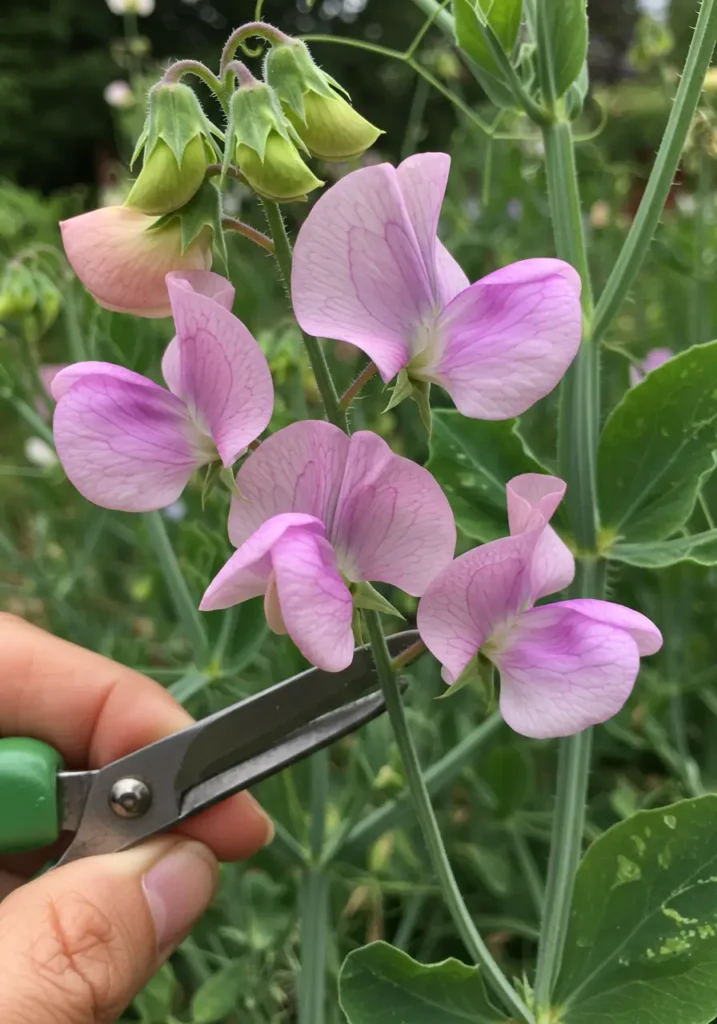
This secret is perhaps the most crucial for continuous blooms and powerful fragrance. Deadheading means removing spent flowers. As sweet pea flowers fade, they begin to form seed pods. This signals to the plant that its reproductive cycle is complete. The plant then shifts its energy from producing more flowers to developing seeds. Removing these faded blooms prevents seed formation. This tricks the plant into producing more flowers in a desperate attempt to create seeds. Cut the flower stalks regularly, ideally every day or every other day. This encourages a fresh flush of fragrant blooms throughout the season.
Secret 7: Mind Pests and Diseases: Protecting Your Investment
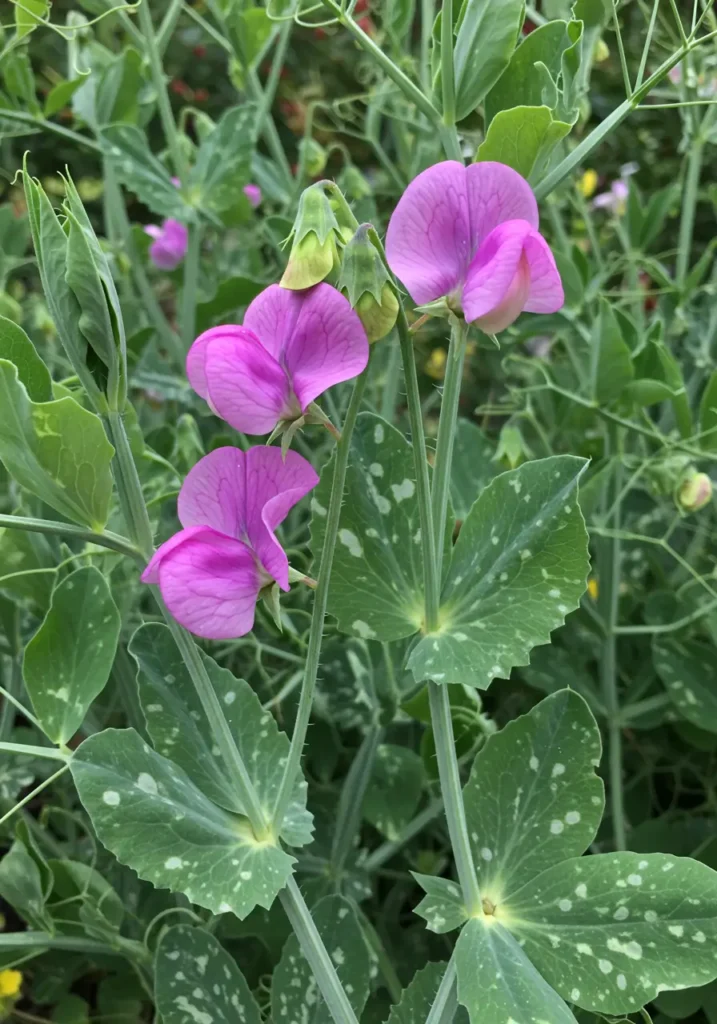
Sweet peas are generally hardy, but they can face challenges from common garden pests and diseases. Monitor your plants regularly for signs of aphids, spider mites, or powdery mildew. Address issues promptly with organic solutions like insecticidal soap for pests or copper-based fungicides for mildew. Ensure good air circulation by proper spacing and thinning, which helps prevent fungal problems. Healthy plants produce the most vigorous growth and the strongest fragrance. Early detection and intervention protect your sweet pea harvest.
Also Read: The Best Swing Set Accessories: Enhance Backyard Fun
Matching Sweet Peas to Your Garden Style
Sweet peas adapt beautifully to various garden styles, offering versatility beyond their climbing nature. They provide a charming addition to many landscape designs.
Cottage Garden Charm: The Classic Home for Sweet Peas
Sweet peas are a quintessential element of the traditional cottage garden. Their rambling vines and abundant blooms perfectly complement informal plantings of perennials and annuals. Plant them against a rustic fence or a weathered trellis to enhance the garden’s natural, romantic feel. Their fragrance blends beautifully with other traditional cottage garden favorites. This creates an enchanting, sensory experience.
Modern Garden Accents: A Contemporary Twist
Even in modern, minimalist gardens, sweet peas find a place. Use them to soften angular lines or to add a touch of natural beauty to structured spaces. Grow them on sleek, modern trellises or metal obelisks for a contemporary look. Choose varieties with strong, single colors to maintain a clean aesthetic. Their vertical growth provides height without visual clutter, making them surprisingly versatile.
Container Growing: Fragrance for Small Spaces
Sweet peas also thrive in large containers, making them perfect for patios, balconies, or small urban gardens. Choose a container at least 18-24 inches deep and wide to accommodate their extensive root system. Provide a sturdy mini-trellis or a series of bamboo stakes for support. Ensure consistent watering and feeding, as container plants dry out faster. Container-grown sweet peas bring their delightful fragrance close to your living space.
Budget Considerations for Sweet Peas
Growing sweet peas can be a very economical endeavor. Your budget largely depends on whether you start from seed or purchase plants, and the type of support you choose.
Affordable Seeds: The Economical Start
Starting sweet peas from seed offers the most budget-friendly option. A packet of high-quality sweet pea seeds typically costs only a few dollars. This yields dozens of plants. This low initial investment allows you to experiment with many different varieties. It also makes growing a large patch of sweet peas highly affordable. Consider seed swaps with other gardeners to further reduce costs.
Mid-Range Plants/Supplies: Convenience and Durability
If you prefer to bypass seed starting, purchasing young sweet pea plants from a nursery offers convenience. These usually cost a few dollars per plant. Investing in reusable, sturdy trellises or netting also falls into a mid-range budget. These initial purchases last for many seasons, providing long-term value. This option offers a good balance of time saved and initial investment.
Premium Supports/Specialty Seeds: Elevated Investment
For dedicated growers or those seeking specific, rare varieties, some specialty sweet pea seeds might cost more. Investing in decorative, high-quality metal obelisks or custom-built trellises represents a higher upfront cost. These items often serve as garden art and provide robust, long-lasting support. This option caters to gardeners who prioritize aesthetics and unique cultivars.
Caring for Your Sweet Pea Garden
Proper care ensures your sweet peas thrive throughout the growing season, producing abundant, fragrant blooms. Consistent attention keeps plants healthy and productive.
Regular Watering and Feeding
Sweet peas are thirsty plants, especially when flowering. Water deeply and regularly, particularly during dry spells. Aim to keep the soil consistently moist but not waterlogged. Once blooms appear, apply a balanced liquid fertilizer every two to three weeks. This provides the continuous nutrients they need for vigorous growth and sustained flower production. Avoid letting the soil dry out completely, as this can stress the plants and reduce blooming.
Pest and Disease Monitoring
Inspect your sweet pea plants regularly for signs of common pests like aphids or spider mites. Address infestations promptly with organic solutions such as insecticidal soap. Watch for powdery mildew, especially in humid conditions or if air circulation is poor. Ensure good spacing between plants. Remove affected leaves. A healthy plant is less susceptible to severe infestations or disease. Early detection and intervention save your blooms.
Pruning and Training
Pinch out the growing tips of young sweet pea plants when they are about 4-6 inches tall. This encourages bushier growth and more flowering stems. Guide vines onto your support structure as they grow. Gently tie them if needed, ensuring they climb effectively. This training maximizes sunlight exposure and air circulation, contributing to overall plant health and bloom quality.
Latest Innovations in Sweet Pea Cultivation
The world of horticulture continually advances, bringing new methods and varieties to beloved plants like sweet peas. These innovations enhance cultivation, resilience, and aromatic potential.
New Disease-Resistant Varieties
Breeders develop new sweet pea varieties with enhanced resistance to common diseases like powdery mildew and fusarium wilt. These new cultivars offer gardeners more robust options, reducing the need for chemical treatments and ensuring a healthier plant. This means more consistent blooms and less maintenance for the grower.
This innovation helps sweet peas thrive in a wider range of climates. It provides greater reliability, even for novice gardeners.
Improved Sowing Aids and Inoculants
Advances in seed starting technology include biodegradable pots and specialized seed trays that promote healthy root development. Additionally, new rhizobium inoculants specifically formulated for sweet peas are available. These beneficial bacteria enhance nitrogen fixation, improving plant vigor and nutrient uptake, especially in new garden beds.
These aids simplify the sowing process. They give seedlings a stronger start. This translates to more robust plants capable of producing abundant, fragrant flowers.
Sustainable Gardening Practices
The push for sustainable gardening impacts sweet pea cultivation. This includes the increased use of organic fertilizers, pest control methods that prioritize beneficial insects, and water-wise irrigation techniques. Gardeners also adopt practices like mulching to conserve soil moisture and reduce weed growth.
These sustainable approaches promote long-term soil health. They reduce environmental impact. They lead to healthier plants that naturally produce better blooms and a stronger fragrance.
Making Your Final Decision on Sweet Peas
Choosing to grow sweet peas is a decision that rewards you with beauty and unparalleled fragrance. Focus on selecting varieties and methods that align with your gardening style and local climate.
Prioritize preparing your soil. Ensure it is rich and well-draining. Provide a sturdy support structure for their climbing habit. Consistent watering, regular feeding, and relentless deadheading are critical for a season of abundant blooms.
Consider your personal preference for scent intensity versus bloom size. Grandiflora types offer the most fragrance. Some modern hybrids offer larger, more dramatic flowers. Your choice depends on what you value most in your garden.
Do not overlook the importance of regular observation. Monitor your plants for signs of stress, pests, or disease. Early intervention keeps your sweet peas healthy and productive.
Remember, growing sweet peas is a joyful process. When your garden fills with their enchanting perfume, you experience one of nature’s true delights.
Also Read: Iron Gates and Wrought Iron Gates: Your Ultimate Selection Guide
Unlock the Aromatic Magic of Sweet Peas
Sweet peas offer an exceptional combination of visual charm and intense fragrance, making them a must-have for any gardener seeking a sensory delight. Mastering the secrets of their cultivation brings immense satisfaction and fills your outdoor spaces with their captivating scent.
Take time to research the varieties best suited for your region. Plan your planting time carefully. Remember that a little extra effort in preparation and consistent care yields bountiful rewards.
As you embark on your sweet pea journey, remain patient and observant. Your efforts will culminate in a vibrant display of color and an unforgettable perfume that enriches your garden.
By applying these expert secrets, you transform your garden into a fragrant haven. Prepare to enjoy the exquisite beauty and intoxicating scent of your sweet pea blooms throughout the season.
Frequently Asked Questions About Sweet Peas
What makes sweet peas so fragrant?
Sweet peas are renowned for their intense, natural fragrance, particularly older Grandiflora varieties. This scent comes from volatile organic compounds produced in their petals. Proper cultivation, including ample sun and rich soil, enhances this natural perfume.
When is the best time to plant sweet peas for maximum fragrance?
Planting sweet peas early is crucial. In mild climates, sow seeds in late autumn. In colder regions, plant as soon as the soil is workable in very early spring, typically 6-8 weeks before your last frost. This allows roots to establish in cool soil before summer heat arrives.
Do sweet peas need full sun?
Yes, sweet peas require full sun for at least six to eight hours daily to produce the most abundant and fragrant blooms. While they tolerate some light afternoon shade in hot climates, too much shade results in fewer flowers and weaker scent.
How important is deadheading for sweet peas?
Deadheading is extremely important for sweet peas. Regularly removing spent flowers prevents the plant from forming seeds. This signals to the plant to produce more blooms in an effort to reproduce, resulting in a continuous supply of fragrant flowers throughout the growing season.
Can I grow sweet peas in containers?
Yes, you can successfully grow sweet peas in containers. Choose a large container, at least 18-24 inches deep and wide, to accommodate their robust root system. Ensure the container has good drainage. Provide a sturdy trellis or stakes for the vines to climb. Container-grown sweet peas require more frequent watering and feeding than those in the ground.
This Post Contains Affiliate Links
